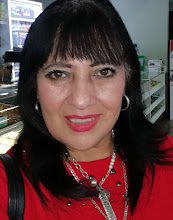¿WHO IS ITSMANIA PINEDA PLATERO?
ONE WOMAN OF PEACE ON THE WORK
"1000 PEACE WOMAN"
ACROSS THE GLOBE
Honduras is a country broken by the chronic inequality that has excluded young people from the center of economic and cultural opportunity, forcing then to survive en the margins of society, with the violence and inscrutability of the gangs.
With the foundation, en 1989, of XIBALBA, ITSMANIA PINEDA PLATERO created a space and an opportunity where young people have the chance to change their lives and channel their artistic energies into different socially beneficial projects. With these activities they are able to discover new identities, based, on admiration and respect from the community.
.
During her childhood in Comayagüela, on the periphery of Tegucigalpa Itsmania Pineda was part of the expansion of the young organization that are recognized all over Central America by the name of maras. Those brotherhoods were originated in the United State as a reaction to the violence related to inter- ethnic and economic factors that created conflicts inside the migrant community.
With the deportation of their leaders and members, the gangs where reproduced in their native territories.
In 1989, along with a group of artists and community activists, inspired on the Mayan idea of the labyrinth-like essence of the human spirit, Itsmania founded the Xibalbá Art and Culture. Honduras young , despised and exclude because of their way of dressing and their gangs symbols, found, in Xibalbá, a place to develop their creative and cooperative potential, participating, able to express themselves, showing their sensibilities, and responding in to melt the mask of public prejudice an gave the young people from Xibalbá a prestige that travels far beyond the Honduran national borders.
In her book "Why I joined the gangs" Itsmania-officially named by the Honduran Courts as the only expert and adviser in the interpretation of tattoos – approached the dynamics of the young gangs from a panoramic vision, which she gained due to her privileged experience. The book acted as immediate stimuli for the international mechanisms of solidarity and is considered of inestimable value to the field of social science. "If the young can foundation together to give a violent response to situations, they can act together in the order to respond with their art".
Since the end of 1980s, young people, deported by the United Stated, found in their native countries the same situation of economic exclusion and police persecution that encountered in the USA. In self-defense, they reproduced the gangs that they formed as a means of survival.
1000 MUJERES DE PAZ DEL MUNDO
DERECHOS RESERVADOS.
http://www.xibalbahonduras.blogspot.com/


